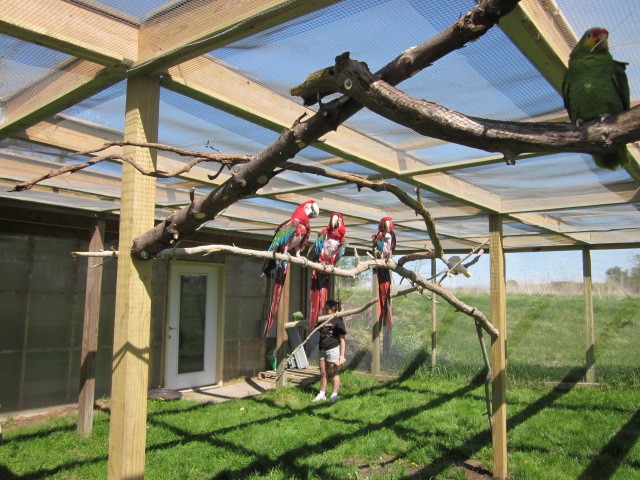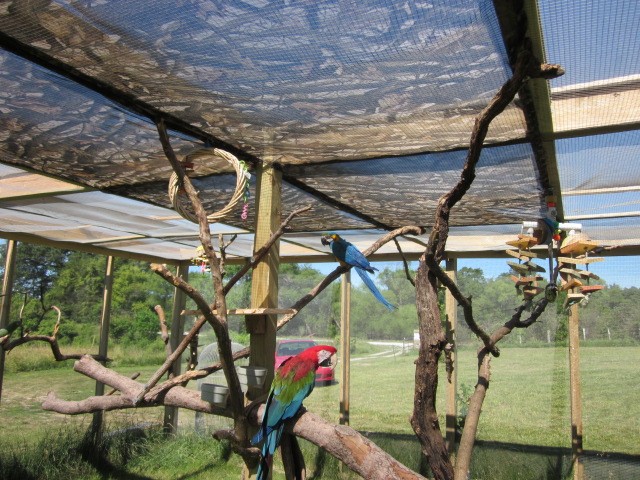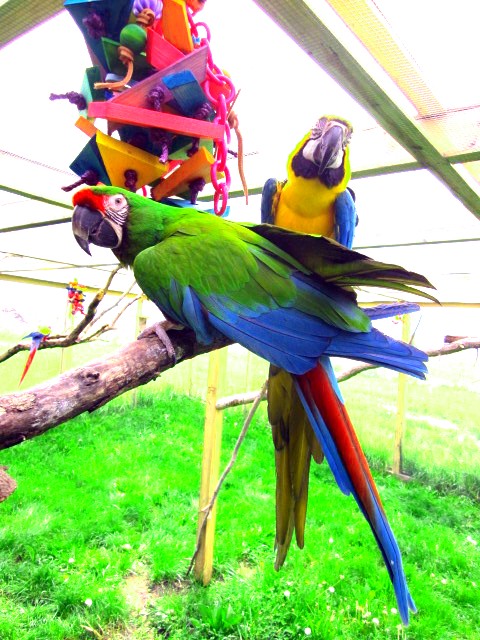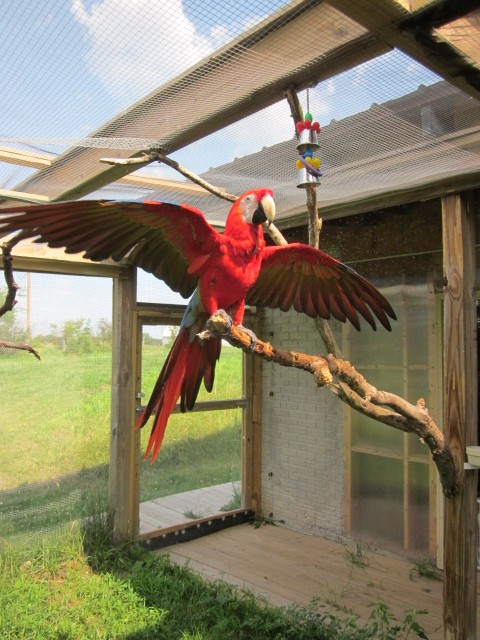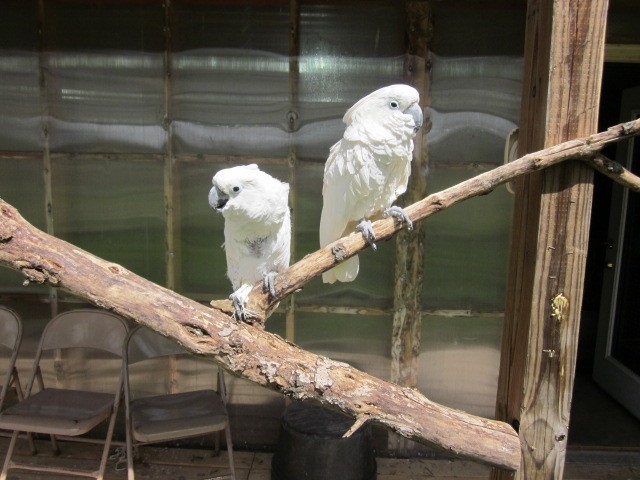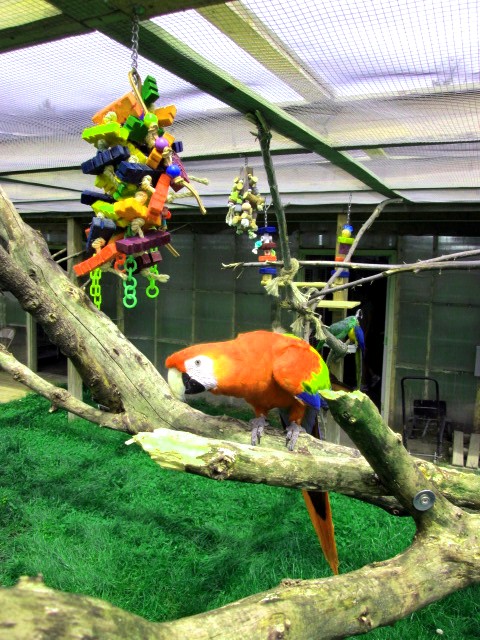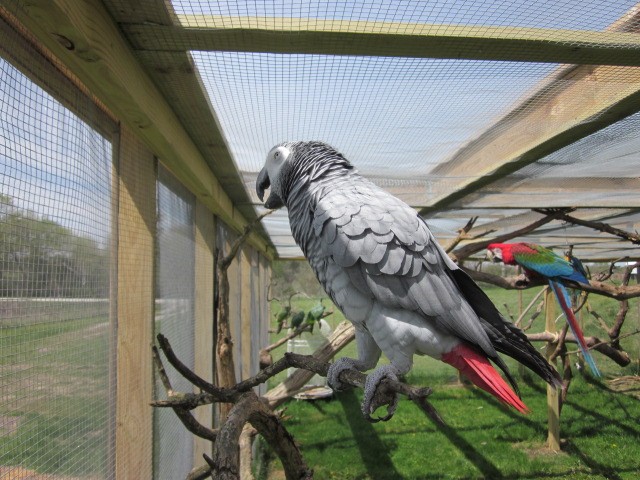We're pretty happy with our outdoor flight area. It's attached to the building and accessed by three doors, one from each of the indoor bird areas. It's 1500 square feet, and is wired to keep birds in and predators and insects out.
HOW TO BUILD IT
FRAMING THE WALLS
Set treated 4x4 posts every 4 feet. Plant them at least 2 feet deep, and as tall as you want the aviary. Add treated 2x4 framing top and bottom.
FRAMING THE ROOF
Treated 2x4 or 2x6 (depending on how long the span is) every 2 feet. If the span is more than 8 feet, you'll need support posts midway.
COVERING THE ROOF
If you're screening it, lay 2 foot aluminum insect screen on top of the joists. Staple it down tightly, then nail wood strips on top of the joists and screen. You'll want to work one width at a time so you can reach across to staple and nail.
On the underside of the joists, attach 1/2" mesh hardware cloth. This is much easier with two or three people. This will contain any size parrots and macaws can't bite through it. DO NOT USE POULTRY WIRE...it is thin and can cut toes and faces. Staple first, then attach 1x2 trim strips. DO NOT USE TREATED WOOD HERE. Birds will be able to chew on this part.
If birds will be out in hot sun, be sure to install some shade...camo net or burlap work well and are cheap.
COVERING THE WALLS
The same process as the roof...hardware cloth inside and insect screen outside. If you have a serious varmint problem, you'll want to add another layer of hardware cloth outside to keep them from tearing the bug screen. You can also trench around the base and bury concrete block, wire mesh, or sheet steel to prevent animals from burrowing in.
NOW THE FUN STUFF
Find branches of varying sizes and shapes, and attach them to the wall and roof joists using deck screws. Hang boings and swings. Put toys where they can be reached. Install food and water dishes as needed. Be sure that droppings from wild birds can't fall in. Feeling really ambitious? Add a water feature and plantings of hardy shreddable stuff like bamboo, willow, or whatever else seems fun and safe.


